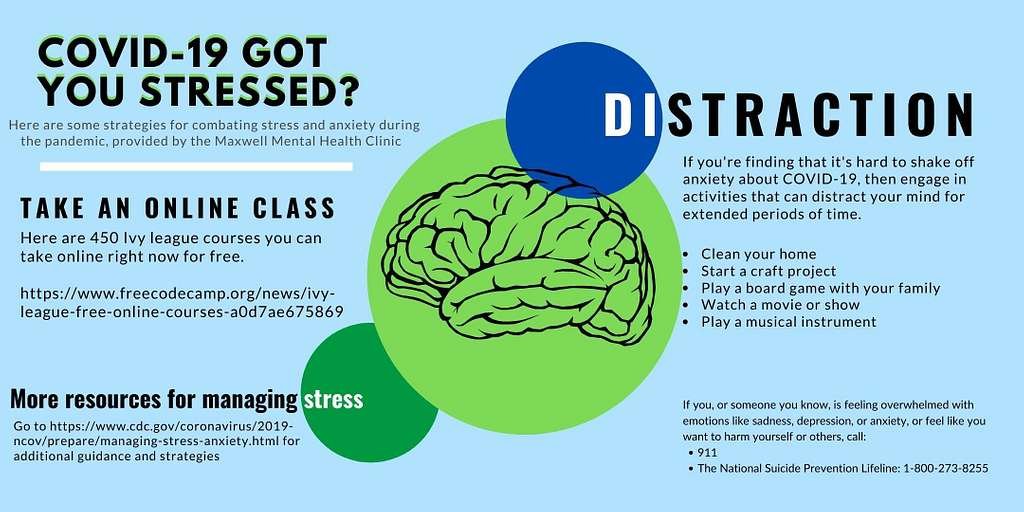Working from home has become the new norm for many individuals, blurring the lines between personal and professional spaces. While the flexibility and convenience of remote work are undeniable, it is not without its drawbacks. As the world embraces this digital revolution, an unexpected companion has emerged – anxiety. The connection between remote work and anxiety is a complex web that intertwines various factors, from isolation and blurred boundaries to increased screen time and the pressure to constantly be available. In this article, we delve into the intricate relationship between remote work and anxiety, exploring the challenges faced by remote workers and offering strategies to navigate this uncharted territory. So, grab a cup of tea, find a cozy spot, and let’s unravel the mysteries of this modern work-life conundrum.
Table of Contents
- The Connection Between Remote Work and Anxiety:
- The Impact of Remote Work on Mental Health
- Understanding the Factors Contributing to Anxiety in Remote Work
- Strategies to Manage Anxiety in a Remote Work Environment
- Creating a Healthy Work-Life Balance in Remote Work
- Supporting Employee Well-being in Remote Work Settings
- Q&A
- Final Thoughts

The Connection Between Remote Work and Anxiety:
Working remotely has become increasingly popular in recent years, offering flexibility and convenience for employees. However, it is important to acknowledge the potential impact that remote work can have on mental health, specifically anxiety.
One of the main factors contributing to anxiety in remote work is the lack of separation between work and personal life. Without a physical office to leave at the end of the day, it can be challenging to establish boundaries and maintain a healthy work-life balance. This constant accessibility to work can lead to feelings of being constantly “on” and difficulty in disconnecting from work-related stressors.
Additionally, the isolation that comes with remote work can exacerbate feelings of anxiety. Without the social interactions and support system that an office environment provides, remote workers may feel lonely and disconnected. This lack of face-to-face communication can also make it harder to seek help or share concerns, further contributing to anxiety.
To mitigate the impact of remote work on anxiety, it is crucial for individuals to establish a routine and create a dedicated workspace. Setting clear boundaries between work and personal life, such as designating specific working hours and creating a separate workspace, can help create a sense of structure and separation. Regular breaks and incorporating self-care activities into the daily routine are also essential for maintaining mental well-being.
Furthermore, staying connected with colleagues and building a support network is vital for remote workers. Utilizing communication tools, such as video calls or instant messaging, can help foster relationships and combat feelings of isolation. Seeking out online communities or joining virtual networking events can also provide opportunities for social interaction and support.
While remote work offers numerous benefits, it is crucial to address the potential impact on mental health, particularly anxiety. By implementing strategies to establish boundaries, prioritize self-care, and foster connections, remote workers can navigate the challenges and maintain their well-being in this evolving work environment.

The Impact of Remote Work on Mental Health
Working remotely has become increasingly common in today’s digital age, offering flexibility and convenience for employees. However, it is important to acknowledge the impact that remote work can have on mental health.
One of the main challenges of remote work is the blurring of boundaries between work and personal life. Without a physical separation between the office and home, it can be difficult to establish a healthy work-life balance. This can lead to increased stress and burnout, as individuals find themselves constantly connected to work and unable to fully disconnect and recharge.
Moreover, the lack of social interaction and face-to-face communication that comes with remote work can contribute to feelings of isolation and loneliness. Human beings are social creatures, and the absence of regular social interactions can have a negative impact on mental well-being. It is important for remote workers to actively seek out opportunities for social connection, whether through virtual team meetings, online communities, or regular check-ins with colleagues and friends.
Additionally, the absence of a structured office environment can make it challenging to maintain focus and productivity. Distractions at home, such as household chores or family responsibilities, can easily disrupt workflow and lead to feelings of frustration and decreased motivation. Establishing a dedicated workspace and setting clear boundaries with family members or roommates can help create a more conducive work environment.
Overall, while remote work offers numerous benefits, it is crucial to prioritize mental health and take proactive steps to mitigate the potential challenges it may bring. By establishing boundaries, seeking social connections, and creating a productive work environment, individuals can ensure a healthier and more fulfilling remote work experience.

Understanding the Factors Contributing to Anxiety in Remote Work
Remote work has become increasingly popular in recent years, offering flexibility and convenience to employees. However, it is important to acknowledge that this shift in work dynamics can also bring about certain challenges, including anxiety. Understanding the factors that contribute to anxiety in remote work can help individuals and organizations address these issues effectively.
1. Lack of social interaction: One of the main factors contributing to anxiety in remote work is the lack of face-to-face social interaction. Working from home can often lead to feelings of isolation and loneliness, which can negatively impact mental well-being. It is important for remote workers to find ways to stay connected with colleagues and maintain a sense of community, whether through virtual meetings, online forums, or team-building activities.
2. Blurred work-life boundaries: Another factor that can contribute to anxiety in remote work is the difficulty in establishing clear boundaries between work and personal life. Without a physical separation between the two, it can be challenging to switch off from work and relax. Remote workers should strive to create a designated workspace, establish a routine, and set boundaries with both themselves and their colleagues to maintain a healthy work-life balance.
3. Increased self-discipline and motivation: Remote work requires a higher level of self-discipline and motivation compared to traditional office settings. The lack of direct supervision and the freedom to manage one’s own time can be overwhelming for some individuals, leading to anxiety. Developing effective time management strategies, setting realistic goals, and seeking support from colleagues or mentors can help alleviate these pressures and promote a more positive remote work experience.
By understanding and addressing these factors, individuals and organizations can create a supportive remote work environment that prioritizes mental well-being and reduces anxiety among remote workers.

Strategies to Manage Anxiety in a Remote Work Environment
Working remotely can bring about a unique set of challenges, including increased feelings of anxiety and stress. However, with the right strategies in place, you can effectively manage and alleviate these emotions. Here are some creative approaches to help you navigate anxiety in a remote work environment:
- Create a designated workspace: Establishing a dedicated area for work can help create a clear boundary between your personal and professional life. Whether it’s a separate room or a specific corner in your home, having a designated workspace can enhance focus and reduce distractions, ultimately easing anxiety.
- Establish a routine: Maintaining a consistent daily routine can provide a sense of structure and stability. Set specific work hours, take regular breaks, and allocate time for self-care activities. By adhering to a routine, you can better manage your time and reduce anxiety associated with feeling overwhelmed or disorganized.
- Practice mindfulness: Incorporating mindfulness techniques into your daily routine can significantly reduce anxiety. Take a few moments each day to engage in deep breathing exercises, meditation, or yoga. These practices can help calm your mind, increase focus, and promote overall well-being.
- Stay connected: Isolation can contribute to feelings of anxiety, so it’s crucial to maintain social connections even in a remote work environment. Schedule virtual coffee breaks or team-building activities with colleagues, join online communities related to your industry, and reach out to friends and family regularly. Building and nurturing relationships can provide a support system and alleviate feelings of loneliness.
- Set boundaries: Establishing clear boundaries between work and personal life is essential for maintaining a healthy work-life balance. Communicate your availability to colleagues and clients, and avoid overworking or constantly checking emails outside of designated work hours. By setting boundaries, you can reduce stress and prevent burnout.
By implementing these strategies, you can effectively manage anxiety in a remote work environment and create a healthier and more productive work-life balance.
Creating a Healthy Work-Life Balance in Remote Work
When it comes to remote work, maintaining a healthy work-life balance can be a challenge. Without the clear boundaries of a physical office, it’s easy for work to spill over into personal time, leading to burnout and decreased productivity. However, with a few strategies in place, you can create a harmonious balance between your professional and personal life.
Setting Boundaries
One of the key aspects of achieving a healthy work-life balance is setting clear boundaries. Establishing designated work hours and sticking to them can help you maintain a sense of structure and prevent work from encroaching on your personal time. Communicate these boundaries to your colleagues and clients, so they understand when you are available and when you are not.
Creating a Dedicated Workspace
Having a dedicated workspace is essential for remote work. It helps you mentally separate your work life from your personal life. Set up a comfortable and ergonomic workstation that is solely dedicated to work-related activities. This will not only improve your focus and productivity but also allow you to physically leave your workspace at the end of the day, signaling the transition into personal time.
Practicing Self-Care
Remember to prioritize self-care to maintain a healthy work-life balance. Take regular breaks throughout the day to stretch, exercise, or engage in activities that bring you joy. Incorporate relaxation techniques such as meditation or deep breathing exercises to reduce stress. Additionally, make time for hobbies, family, and friends to ensure a well-rounded and fulfilling life outside of work.
Avoiding Overworking
It can be tempting to work longer hours when working remotely, but overworking can lead to burnout and decreased productivity. Set realistic goals and prioritize tasks to avoid feeling overwhelmed. Learn to recognize when it’s time to step away from work and recharge. Remember, a healthy work-life balance is crucial for your overall well-being and long-term success.
Supporting Employee Well-being in Remote Work Settings
Ensuring the well-being of employees in remote work settings is crucial for maintaining productivity and overall satisfaction. Here are some effective strategies to support your remote workforce:
1. Encourage work-life balance:
Remote work can blur the boundaries between personal and professional life. Encourage your employees to establish a healthy work-life balance by setting clear expectations regarding working hours and breaks. Encourage them to take regular breaks, engage in physical activity, and spend quality time with their loved ones.
2. Foster open communication:
Remote work can sometimes lead to feelings of isolation. Foster open communication channels to ensure employees feel connected and supported. Encourage regular check-ins, team meetings, and virtual social activities to maintain a sense of camaraderie. Utilize collaboration tools and platforms to facilitate seamless communication and encourage team collaboration.
3. Provide resources for mental well-being:
Working remotely can bring unique challenges to mental well-being. Offer resources such as access to mental health professionals, online wellness programs, and self-care tips. Encourage employees to prioritize self-care and provide them with the necessary tools and resources to manage stress and maintain a healthy mindset.
4. Promote ergonomic practices:
Working from home can lead to poor ergonomics, resulting in discomfort and potential health issues. Provide guidelines on setting up a comfortable and ergonomic workspace. Encourage employees to invest in proper office equipment, such as ergonomic chairs and adjustable desks. Regularly remind them to take breaks and stretch to avoid prolonged sitting.
By implementing these strategies, you can create a supportive environment that prioritizes employee well-being in remote work settings.
Q&A
What is the connection between remote work and anxiety?
Remote work can contribute to anxiety due to factors such as isolation, blurred boundaries between work and personal life, and increased pressure to constantly be available. The lack of face-to-face interaction and support can also exacerbate feelings of stress and anxiety.
How does isolation impact remote workers’ mental health?
Isolation can lead to feelings of loneliness and disconnection, which can negatively impact mental health. Without the social interactions and support system found in a traditional office setting, remote workers may experience increased anxiety and a sense of being disconnected from their colleagues.
Why do blurred boundaries between work and personal life contribute to anxiety?
When work and personal life boundaries become blurred, it becomes challenging to switch off from work and relax. This constant availability and pressure to be productive can lead to burnout and heightened anxiety levels as individuals struggle to find a healthy work-life balance.
How does the pressure to always be available affect remote workers?
The expectation to always be available can create a constant state of stress and anxiety for remote workers. The fear of missing out on important information or opportunities can lead to a constant need to check emails and messages, making it difficult to disconnect and relax.
What role does lack of face-to-face interaction play in remote work anxiety?
The absence of face-to-face interaction can make it harder for remote workers to build relationships, seek support, and communicate effectively. This can lead to feelings of isolation, increased self-doubt, and heightened anxiety as individuals may struggle to feel connected and understood by their colleagues.
Are there any strategies to mitigate anxiety in remote work?
Yes, there are several strategies to help alleviate anxiety in remote work. Setting clear boundaries between work and personal life, establishing a routine, maintaining regular communication with colleagues, and seeking social interactions outside of work can all contribute to a healthier work-life balance and reduce anxiety levels.
Final Thoughts
As we conclude this exploration into the intricate relationship between remote work and anxiety, it becomes evident that the digital revolution has brought both blessings and burdens to our lives. While the flexibility and convenience of working from home have undoubtedly revolutionized the way we approach our careers, it is crucial to acknowledge the toll it can take on our mental well-being.
In this era of constant connectivity, the boundaries between work and personal life have become increasingly blurred. The once-clear distinction between the office and the sanctuary of our homes has faded, leaving us vulnerable to the relentless demands of our professional lives. The absence of physical separation can lead to a perpetual state of being “on,” where the pressure to be constantly available and productive can be overwhelming.
Moreover, the isolation that often accompanies remote work can exacerbate feelings of anxiety. The absence of face-to-face interactions and the camaraderie of a shared workspace can leave us feeling disconnected and lonely. The lack of social cues and non-verbal communication can further contribute to a sense of unease and uncertainty.
However, it is important to remember that remote work is not inherently detrimental to our mental health. With the right strategies and support systems in place, we can navigate this new landscape and find a harmonious balance between work and well-being.
Setting clear boundaries is paramount. Establishing designated workspaces and defining specific working hours can help create a sense of structure and separation. Regular breaks and moments of self-care are equally crucial, allowing us to recharge and rejuvenate amidst the demands of our professional lives.
Additionally, fostering connections and maintaining social interactions is vital. Engaging in virtual team-building activities, participating in online communities, or even organizing virtual coffee breaks can help combat the feelings of isolation and foster a sense of belonging.
Ultimately, the connection between remote work and anxiety is a complex one, influenced by various factors unique to each individual. By acknowledging the challenges and implementing strategies to mitigate them, we can harness the benefits of remote work while safeguarding our mental well-being.
As we continue to adapt to this ever-evolving landscape, let us strive for a future where remote work is not synonymous with anxiety, but rather a catalyst for personal growth, professional success, and overall fulfillment.
As an affiliate, my content may feature links to products I personally use and recommend. By taking action, like subscribing or making a purchase, you’ll be supporting my work and fueling my taco cravings at the same time. Win-win, right?
Want to read more? Check out our Affiliate Disclosure page.